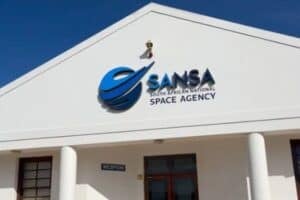NASA's Artemis 3 mission is set to return humans to the Moon in 2025 including its first woman and first non-white astronaut.

Russia’s plan to launch its lunar lander on Friday is the latest in an international push to return to the Moon that includes the world’s top powers but also new players.
Technology, science and politics are all essential factors in the Moon race.
Here is the latest:
China’s great leap
China is pursuing plans to send a crewed mission to the Moon by 2030 and plans to build a base there.
The world’s second-largest economy has invested billions of dollars in its military-run space programme in a push to catch up with the United States and Russia.
China was the third country to put humans in orbit in 2003 and Tiangong is the crown jewel of its space programme, which has also landed rovers on Mars and the Moon.
ALSO READ: Russia to launch lunar mission Friday, first in nearly 50 years
The unmanned Chang’e-4 rocket landed on the far side of the Moon in 2019, with another robot mission to the near side raising the Chinese flag there in 2020.
That moonshot brought rock and soil samples back to Earth, the first time that has been done in more than four decades.
NASA’s Artemis
NASA’s Artemis 3 mission is set to return humans to the Moon in 2025 including its first woman and first non-white astronaut.
Under the Artemis program, NASA is planning a series of missions of increasing complexity to return to the Moon and build a sustained presence in order to develop and test technologies for an eventual journey to Mars.
ALSO READ: India launches rocket to land spacecraft on Moon
The first, Artemis 1, flew an uncrewed spacecraft around the Moon in 2022. Artemis 2, planned for November 2024, will do the same with crew on board.
NASA sees the Moon as a pit stop for missions to Mars and has done a deal with Finnish mobile firm Nokia to set up a 4G network there.
However, NASA said this week that the Artemis 3 mission may not land humans on the Moon, depending on whether certain key elements, including the landing system developed by SpaceX, were ready.
Elon Musk’s firm won the contract for a landing system based on a version of its prototype Starship rocket, which remains far from ready.
ALSO READ: SA plans to have female astronauts on International Space Station
An orbital test flight of the uncrewed Starship ended in a dramatic explosion in April.
Russia’s Luna to moon
Russia’s launch of Luna-25 on Friday will be its first to the Moon since 1976 and marks the beginning of Moscow’s new lunar project.
President Vladimir Putin is looking to strengthen space cooperation with China after ties with the West broke down following the start of Moscow’s invasion of Ukraine in 2022.
New players to moon race
Recent technological progress has reduced the cost of missions and opened the way for new players in the public and private sector to get involved.
India’s latest space mission Chandrayaan-3 entered the Moon’s orbit in August ahead of the country’s second attempted lunar landing later this month.
ALSO READ: NASA invests in a Deep Space Ground Station in SA
But getting to the Moon is not an easy task. Israeli non-profit SpaceIL launched its Beresheet lunar lander in 2019, but it crashed.
And in April this year Japan’s ispace was the latest company to try, and fail, at the historic bid to put a private lunar lander on the Moon.
Two other US companies, Astrobotic and Intuitive Machines, are set to try later in the year.






